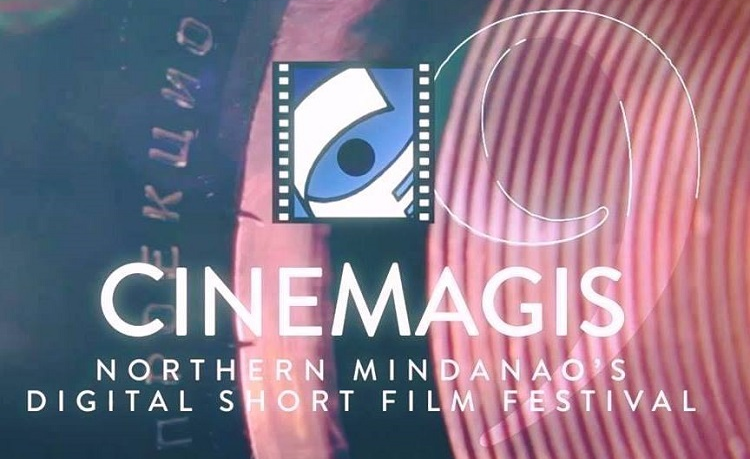(Note: This editorial was released in January 2017 during the 9th Cinemagis: Northern Mindanao Digital Short Film Festival. Download the newsletter here.)
There was a time when the Philippine cinema reigned in its golden age. From the 1960s to the 1980s, viewers had been awed by the stellar performance of Fernando Poe Jr, famously cheered for his stunts and charisma in action films. Laughter came from the gesticulated and verbal humor of Dolphy and songs catapulted Maricel Soriano to stardom after starring in a musical. Most fell in love with Sharon Cuneta and Gabby Concepcion with their onscreen romance, feared the Japanese invasion in Pepe Gallaga's magnum opus, and wept with Nora Aunor when miracles had been falsified.
With the cinema much different now than it was before, it would take a miracle to bring back and improve its former artistry. There can be no mistaking that the films earning big in a country where celebrity is prioritized more than art are those produced only to keep the industry running. Apart from the present mediocrity, films that have become famous in the mainstream gave rise to recurring love teams, shallow slapstick humor, and predictable typecasting. The trend includes recycled plot with celebrities (made famous by entertainment oligarchs) effortlessly portraying common roles, a mockery of prevalent issues, and unsubstantial themes bereft of societal reflections.
How many films in the mainstream have been conflicted with the collision of wife and mistress, have elicited random laughter by the insensitive and insulting humor of a boisterous cross-dressing comedian, or have concocted the same formula of Charles Perault's “Cinderella” and Hans Christian Andersen's “The Ugly Duckling” — specifically one which ascends the character from rags to riches by winning the heart of a wealthy bachelor or dame against the approval of the latter's family?
Plots have been reused as the industry plays safe, sacrificing talent to achieve fame and fortune.
However, miracles come with the new trend. In 2015, Jerrold Tarog's historical biopic of the assassinated Filipino general marked proof that Filipino viewers want to see films tackling different issues that break from traditional overused plotlines. The highly grossing “Heneral Luna” belonged to the sort which Filipinos could appreciate for its historical angling. Tarog's film presented how leaders strive to retain power and choose to betray their fellow countrymen to stay in position while unknowingly risking the country to its downfall — an issue still prevalent in Philippine politics today.
Last year was a landmark for new Filipino films that cater more to artistic and aesthetic quality. Some had been produced independently and were recognized globally such as Brilliante Mendoza's “Ma Rosa.” With its timely depiction of a drug-torn community, it was recognized during the prestigious Cannes Film Festival with Jacklyn Jose receiving the award for Best Actress.
Even the annual Metro Manila Film Festival began honoring authentic talents in December 2016. The Yuletide season, too, is an opportunity to appreciate quality films, be it mainstream or independently-produced. An emergence of filmmakers that endeavored to present relevant and relatable issues in their films, along with new styles of cinematic storytelling, deserve to be commended for setting this trend in the industry. The entries differed from those released in the previous years by comprising real issues happening among those overshadowed by the mainstream. In “Die Beautiful,” crossdressers aren't portrayed as objects of humor but as people struggling to keep their dignity amid the stigma set against them. In “Sunday Beauty Queen,” viewers can observe how Filipinos overseas cope with life working in unfamiliar places and cultures to send for their families back home. With art as a priority, who could have thought that live action and animated characters could be incorporated well in scenes of “Saving Sally”? Talent and risk made some of these films possible and proved that Filipino filmmakers can reach far by their craft.
In a similar trend for nine years now, Xavier University - Ateneo de Cagayan's Cinemagis Digital Short Film Festival continues to feature the evolving talents and voices of budding and professional filmmakers. Among the 17 entries in student and professional categories, this year’s films presented issues such as drug use, cultural differences, and poverty which encourage viewers to think critically and empathize with people in similar situations. Films like these reflect our realities, good or bad, beautiful or ugly.
To curb this promising rise of exceptional pictures, as one senator deems necessary, is to rob Filipino viewers the opportunities to learn from issues concerning our developing country. As films with such subjects can be used for education in a nation with problems as diverse as its people's views, they should not be reduced. With a government that promises change, it is essential to uphold the arts and support artists who can awaken our social consciousness by casting glimpses of reality into their works with cinematic language and creative finesse that speak to our core as Filipinos — igniting a revolution on the mediocre stock of the Philippine cinema.∎
Project Editor: Stephen Pedroza
Festival Writers: Stephen Pedroza and Angelo Lorenzo
Layout Artist: Rico Magallona
Festival Director: Hobart Savior
Producer: Xavier Center for Culture and the Arts
